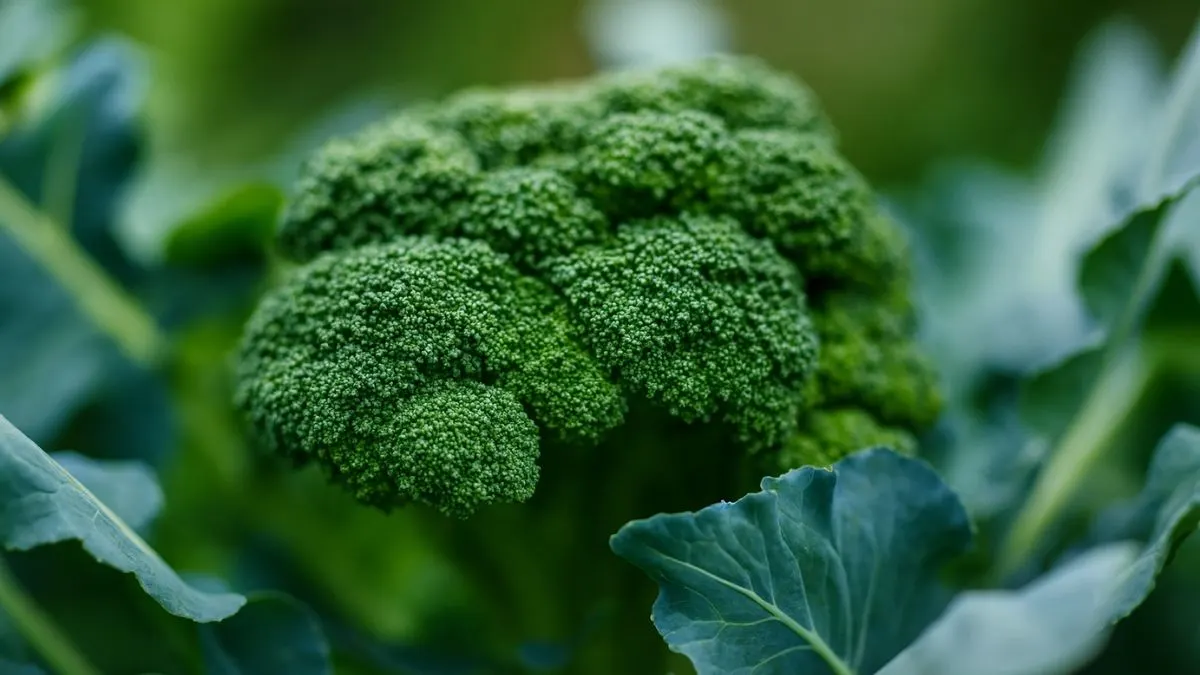Broccoli is one of the most loved vegetables worldwide, not just for its taste but also for its incredible health benefits. Packed with vitamin C, vitamin K, and antioxidants, it’s a superfood you can enjoy fresh when grown at home.
The best part? Growing broccoli isn’t as intimidating as it sounds. With the right conditions—like fertile soil, good sunlight, and regular care—you can enjoy multiple harvests from just a few plants. Whether you live in a suburban home with a backyard or an urban apartment with a balcony garden, broccoli can thrive.
In this blog, I’ll share exactly how to grow broccoli at home, from seed selection to harvest, with some personal tips I’ve learned along the way.
Step 1: Choosing the Right Spot

Like most cool-season crops, broccoli needs a sunny spot with partial shade to grow. This means it should get about 6–8 hours of sunlight daily, but some shade in the afternoon helps prevent the heads from bolting (flowering too early).
In my experience, planting broccoli near taller plants that provide a bit of dappled shade works well, especially in hotter regions.
Step 2: Soil Preparation
Healthy soil is the backbone of a good broccoli harvest. Broccoli grows best in areas with full sun and well-drained, fertile soils. The soil should be rich in organic matter, so adding compost or well-rotted manure before planting is ideal.
- Soil pH: 6.0–7.0 (slightly acidic to neutral).
- Drainage: Crucial to prevent root rot.
- Fertility: A nitrogen-rich base helps with leafy growth.
Also Read: The Sausage Tree Has Serious Medicinal Uses
Step 3: Starting from Seeds or Seedlings
You can either sow seeds indoors or buy young seedlings from a nursery.
- If starting from seed: Begin indoors 6–8 weeks before the last frost date.
- Transplant seedlings outdoors when they are about 4–6 inches tall and the soil is workable.
Spacing is important: leave 18 inches between plants and 24 inches between rows for good airflow.
Step 4: Watering Routine
Broccoli requires consistent moisture to form tender, full heads. Water deeply 2–3 times per week, depending on the weather.
Tip from my own garden: Mulching around the base keeps soil cool and moist, reduces weeds, and ensures steady growth.
Step 5: Fertilizing for Better Harvests
Broccoli is a heavy feeder, so it benefits from regular fertilization.
- Apply a balanced fertilizer (10-10-10) during planting.
- Side-dress with compost or nitrogen fertilizer 3–4 weeks after transplanting.
- Avoid over-fertilizing, as it can cause leafy growth without proper head development.
Also Read: How to Grow Japanese Spindle Anywhere
Step 6: Protecting Broccoli from Pests
Broccoli is prone to pests like cabbage worms, aphids, and flea beetles.
Common Pest |
Signs on Plant |
Solution |
Cabbage Worms |
Holes in leaves |
Neem oil, floating row covers |
Aphids |
Sticky residue, curled leaves |
Spray with soapy water |
Flea Beetles |
Small round holes |
Diatomaceous earth or row covers |
Checking your plants daily and handpicking pests early makes a big difference.
Step 7: Harvesting Broccoli
The best part of growing broccoli is harvesting your own fresh heads.
- Harvest when the heads are tight and firm, before yellow flowers start to appear.
- Cut the main head with a sharp knife, leaving a few inches of stem.
- Side shoots will continue to grow, giving you a secondary harvest.
From my personal experience, this second harvest is often just as rewarding as the first—it feels like a bonus crop!
Quick Reference Table
Growing Factor |
Requirement |
Sunlight |
Full sun with partial shade |
Soil |
Well-drained, fertile soils |
Watering |
2–3 times per week |
Spacing |
18 inches apart |
Harvest Time |
60–90 days from transplant |
Also Read: Morel Mushrooms: The Gourmet Treasure You Can Grow in Your Backyard
Health Benefits of Broccoli
Growing your own broccoli doesn’t just save money—it’s healthier, too. Store-bought broccoli often travels long distances, losing nutrients along the way. Freshly harvested broccoli, on the other hand, is loaded with vitamins and minerals.
Some key benefits:
- Boosts immunity (rich in vitamin C).
- Strengthens bones (high in vitamin K and calcium).
- Supports digestion (great source of fiber).
- Helps fight inflammation (packed with antioxidants).
Personal Gardening Experience
The first time I grew broccoli in my backyard, I made the mistake of planting it in an area that got too much afternoon sun. The plants bolted quickly, and the heads were small. The next season, I followed the rule that broccoli needs a sunny spot with partial shade to grow, and the results were amazing. The heads were large, firm, and the taste—far superior to store-bought.
Growing broccoli at home is a satisfying experience for gardeners of all levels.
If you’re new to gardening, broccoli is a great plant to start with. It’s not only nutritious but also fun to grow, and the joy of harvesting your own fresh broccoli makes the effort worthwhile.






